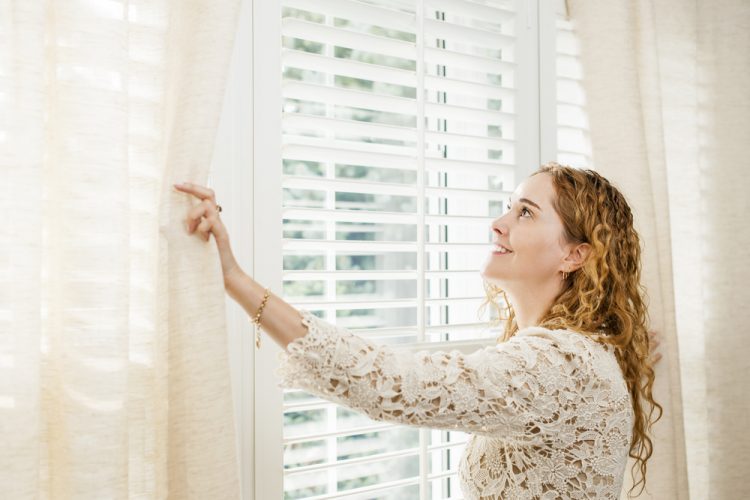Romans? Rollers? Sheers? Here’s what to know.
Select your product
Know your material
Don’t put it off
Master these terms
Roller Shades
Roman Shades
Pleated Shades
Honeycomb, or Cellular Shades
Solar Shades
Blinds
Blackout shades
Drapery
- Ripple Fold Drapery has no pleat, and instead “features simple, elegant waves that cascade gracefully.”
- Tailored Pleat Drapery “is a classic design,” Skalman says. It’s characterized by “repeating sewn folds at the top.”
- Pinch Pleat Drapery features pleats sewn at just the top, giving fabric the look of being pinched from the end (the image at the top of this story shows an Aerin fabric by The Shade Store in pinch pleat).
- Grommet Drapery has metal rings within the fabric which the curtain rod runs through.
- Inverted Pleat Drapery is “creatively designed to hide top-stitching,” Skalman says, giving it a “crisp, clean appearance.”
- Goblet Drapery is a more ornate style. “If you look closely at the top, you’ll see handcrafted pleats that look just like classic goblets,” Skalman says.
- Cubicle Drapery features small grommets or holes for hooks that hang from a track. “This is a budget-conscious option,” says Skalman.
- Rod Pocket Drapery features a top “pocket” with openings at both ends for the rod. The curtain fabric spreads across the rod when shut and “gathers beautifully when opened,” says Skalman.
- Sheer Drapery “is a semi-transparent style that lets soft light filter into your space,” Skalman explains. “It looks great alone, but we suggest layering it with solids or patterns for added depth.”




